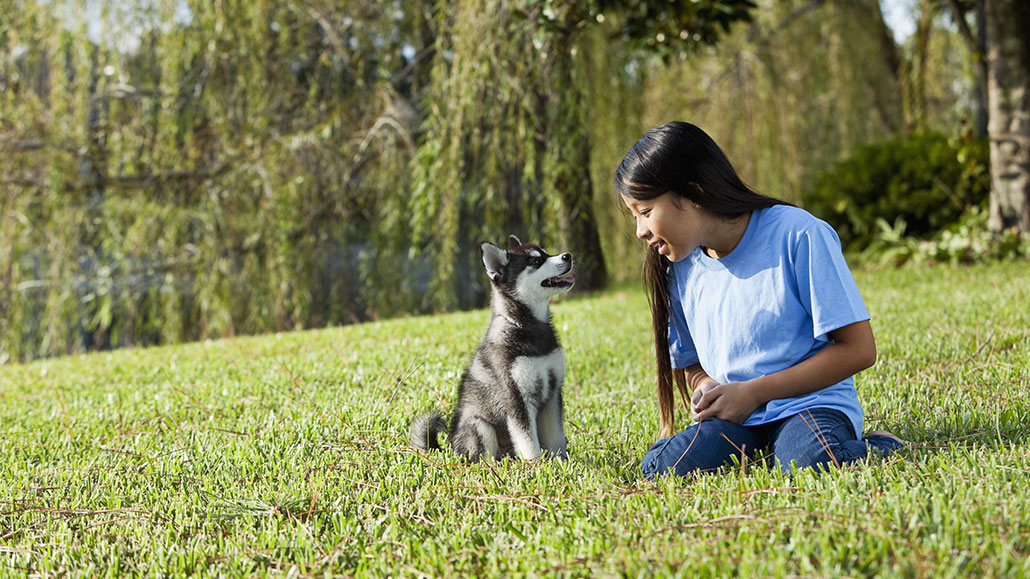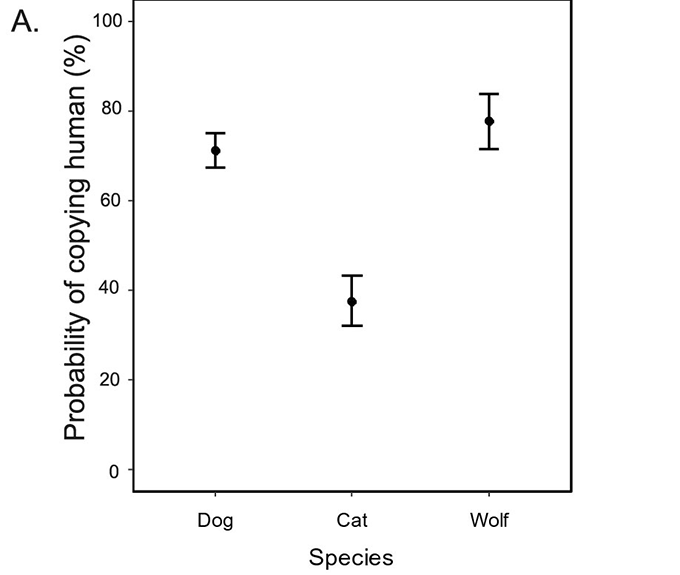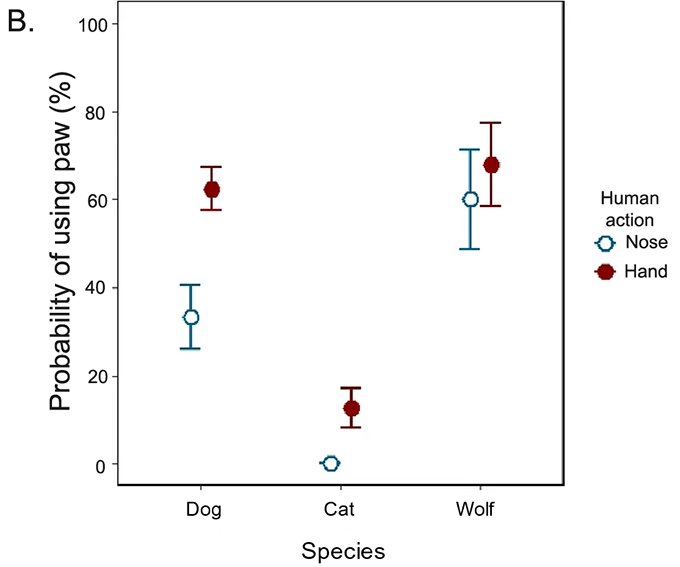Analyze This: Puppies naturally mimic human actions
Dogs’ history of living with and helping people may explain why they copy human actions

Puppies may watch and learn from humans. That suggests treats may not be needed for training. People might be able to model what they want their canine pets to do instead.
kali9/E+/Getty Images
Share this:
- Share via email (Opens in new window) Email
- Click to share on Facebook (Opens in new window) Facebook
- Click to share on X (Opens in new window) X
- Click to share on Pinterest (Opens in new window) Pinterest
- Click to share on Reddit (Opens in new window) Reddit
- Share to Google Classroom (Opens in new window) Google Classroom
- Click to print (Opens in new window) Print
Puppies are often trained with treats — but maybe they don’t have to be. Pups may be able to learn by mimicking people’s actions.
Some past studies have hinted at dogs’ ability to learn by observing humans, says Claudia Fugazza. She studies animal behavior at Eötvös Loránd University in Budapest, Hungary. But past experiments used food to reward dogs when they mimicked people. So, they didn’t reveal whether dogs were natural copycats.
There’s even less known about puppies, Fugazza adds. But there’s reason to think young dogs would be especially good at copying actions. The young of all species have to learn the most. “There’s a lot to learn from observing others,” she says.
Fugazza and her team tested whether puppies and other young animals might imitate people. They rounded up 42 puppies, 39 kittens and 8 young wolves. All of these animals lived with human families. In each test, the researchers showed an animal an object. Once they got the animal’s attention, a researcher modeled an action — either touching an object with their nose or hand. Then, the scientists watched whether the animal copied the human.
It often took a while to get the attention of kittens and young wolves, Fugazza says. But “the dog puppies were basically immediately looking at the human even before we started to call their attention.” After showing the actions, cats rarely replicated what humans did. Wolves sometimes copied, but the dogs were much more reliable. The team shared its findings February 16 in Scientific Reports.
Dogs and cats have both been bred to live with humans — a process known as domestication. “Since they both evolved in a human environment, they should have the same tendency to match human actions,” Fugazza says. But cats don’t. That suggests the importance of another aspect of the animals’ history: social behavior.
Cats evolved from solitary hunters that did not work together. Once they cozied up to humans, cats helped people get rid of mice, but they didn’t work with humans. Dogs evolved from wolves. Wolves work together, hunting in packs. And once dogs started hanging around humans, they worked with people. Dogs became humans’ helpers, for instance, in herding and hunting.
Those relationships might have provided the motivation for imitation. Humans sometimes copy others when there’s no clear reason to, which seems linked to group identity, Fugazza says. “We tend to mimic others’ movements when we are in a relationship with them or when we want to be.”
This tendency for dogs to copy humans might mean that trainers could model behaviors for them instead of coaxing them with food, Fugazza says. “We can do something way more natural — something a little more similar to what we would do with a kid.” You could try this with your dog at home — perhaps see if they might copy you digging in the yard, she says. If the dog mimics you, praising the pet would bolster the behavior.
Mini mimics
In a series of tests, researchers placed a box or wobbly toy in front of a dog puppy, wolf puppy or kitten. These objects were new to the animals. For 25 seconds, the team observed if the animal touched the object and how. Then, a scientist would try to get the animal’s attention and show a different way to touch the object. For instance, if the animal nudged it with its nose, the human would touch it with a hand. Then the researchers watched whether the creature copied them. They calculated the probability that an animal mimicked a human. That was based on whether the animal did the same thing as the human and how long it took (Figure A). They also calculated the probability that an animal would use their paw when a human modeled using a hand or a nose (Figure B).


Data Dive:
- Look at Figure A. Which animals were most likely to match the action of the human? Which animal was least likely?
- Look at Figure B. How likely was a kitten to use a paw when a human used a nose? How much more likely was a kitten to use a paw when the human used a hand?
- How likely was a dog to use a paw when a human used a nose? How much more likely was a dog to use a paw when the human used a hand?
- How did wolves behave differently from dogs?
- What is another way these data could be displayed?
- In this study, the animals saw the researchers touch an object. What are some other actions the researchers could have tried?







